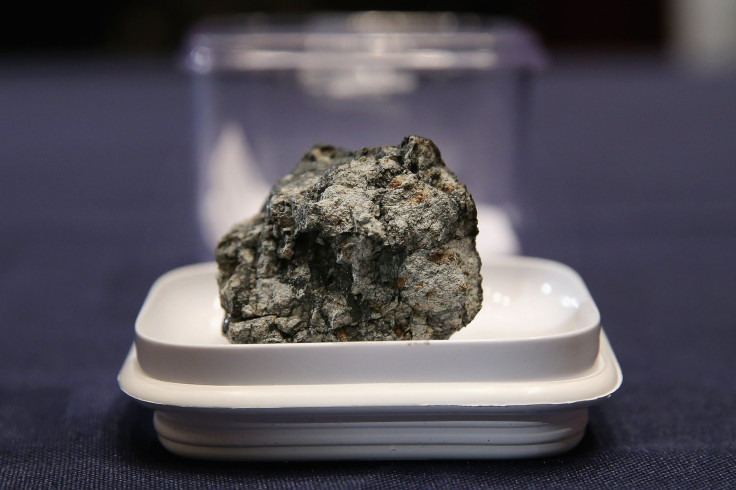'Phenomenal': 2 New Minerals Discovered From This Meteorite Piece [Photo]
KEY POINTS
- The El Ali is the ninth largest meteorite to ever be found
- Scientists identified the new minerals while classifying the meteorite
- More new minerals could be found if the meteorite can be studied further
In a "phenomenal" find, scientists have discovered two new minerals in a massive meteorite that was found in Somalia.
The "El Ali," named after the town near where it was found, is a massive, 15-ton meteorite that's actually the ninth largest meteorite to ever be found, the University of Alberta (U of A) noted in a news release. And when it was sent to experts to be classified, they found two minerals that were completely new to science.
"The very first day he did some analyses, he said, 'You've got at least two new minerals in there," said Chris Herd, the curator of the U of A's Meteorite Collection. "That was phenomenal. Most of the time it takes a lot more work than that to say there's a new mineral." Herd was referring to Andrew Locock of the university's Electron Microscope Laboratory.
The university also shared a photo of a piece of El Ali, which is now at the U of A Meteorite Collection.
A team of researchers has discovered at least two new minerals never before been seen on Earth in the 15 tonne El Ali #meteorite found in Somalia — the 9th largest ever found. #UAlberta @ualbertaScience @UofA_EAS @UAlbertaMuseums https://t.co/sgpQrWmx3t
— University of Alberta (@UAlberta) November 28, 2022
Herd described the discovery of the minerals at the recent Space Exploration Symposium held at the university.
It was easier to establish the minerals were new because they were created synthetically at a lab in France way back in the 1980s, Herd told Global News. However, they weren't classified as new then because they first had to be found in nature before classification.
The new minerals have been named elaliite — after its name El Ali — and elkinstantonite, after planetary scientist and the principal investigator of NASA's Psyche mission, Lindy Elkins-Tanton, to honor her "contributions to science."
What's interesting was that the two new minerals were discovered from a tiny, 70-gram slice of the meteorite. It's possible other minerals are also discovered if more samples are examined, said Herd.
And apart from the excitement of identifying the new minerals, the find may also give clues about asteroid formation.
"Intriguingly, the meteorite that elaliite, the group that it belongs to, may not actually be from the core of an asteroid, it might be from kind of a gigantic pond of originally molten metal near the surface of an asteroid," Herd said. "You never know what you're going to find until you start to investigate these rocks in detail."
For now, however, it's unclear if they will have more chances to explore the meteorite as it has reportedly been moved to China, possibly to be sold to a buyer, according to U of A.

© Copyright IBTimes 2025. All rights reserved.






















